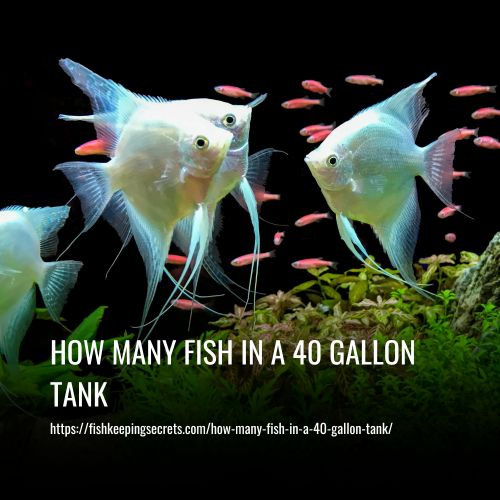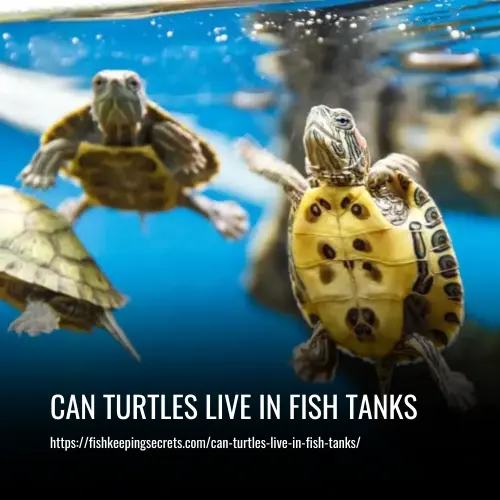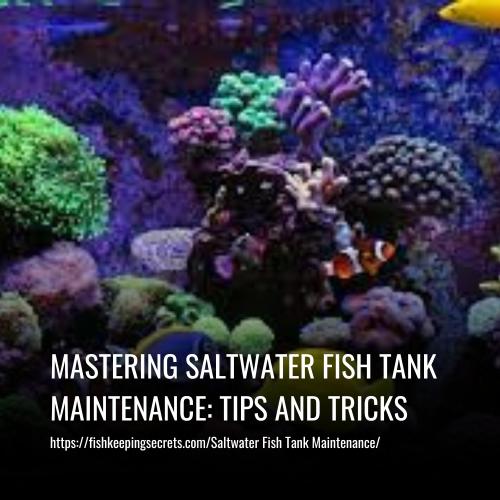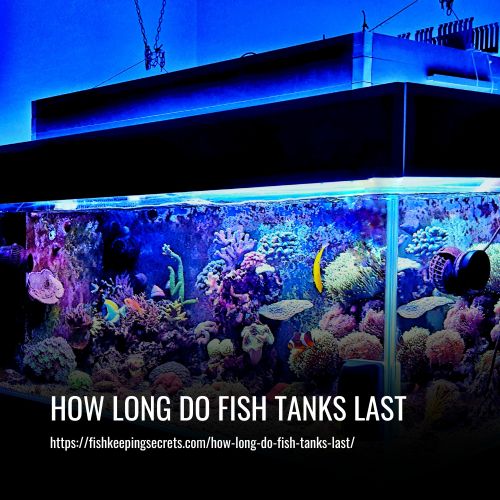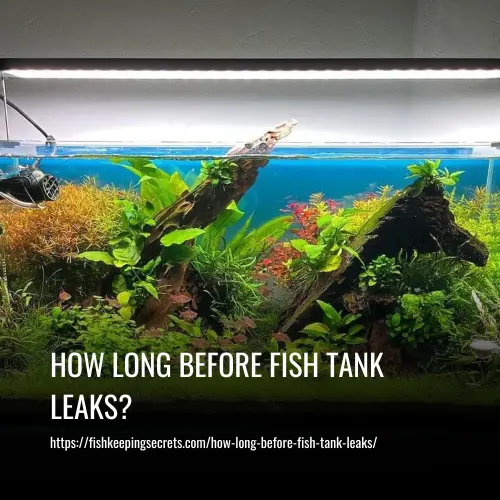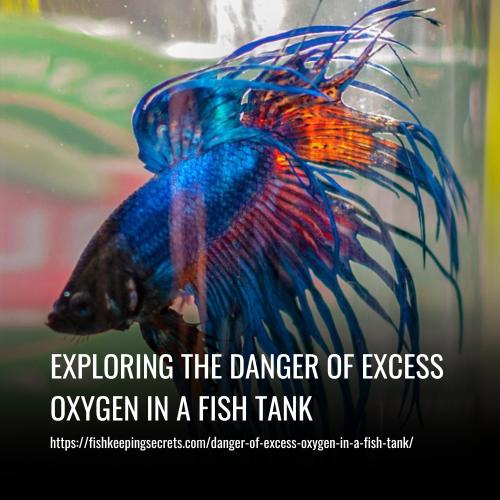What Does Fish Eggs Look Like In A Tank
This post contains affiliate links. As an Amazon Associate, we earn from qualifying purchases.
Fish eggs in a tank are typically small, measuring less than 1 mm in diameter. They have a round shape and come in various colors, which can vary depending on the species of fish. Common colors include orange, black, and white. Overall, fish eggs in a tank bear a striking resemblance to chicken eggs, featuring a small hole in the center.
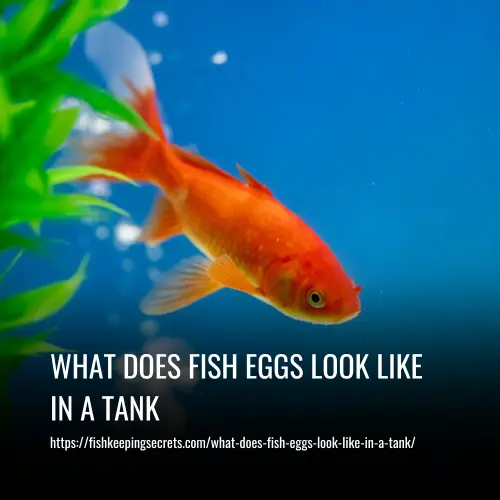
What Do Goldfish Eggs Look Like in a Tank
Goldfish eggs in a tank are transparent and have a bubble-like appearance. After fertilization, the eggs turn yellow and develop a small dark spot in the center. Goldfish lay their eggs on tank decorations and plant leaves. These fish are prolific breeders, laying hundreds to thousands of eggs at once or over a period of time.
However, goldfish are not considered good parents as they may attack and eat their own eggs. If you want to increase the number of goldfish in your tank, it is important to identify the eggs and transfer them to another tank or separate the parent fish to ensure the eggs are not harmed.
What Do Betta Fish Eggs Look Like in a Tank
Betta fish eggs in a tank are small, measuring about 1 mm in size. They have an irregular, oval shape and are transparent with a white color. Additionally, betta fish eggs may have a yellow tint, making them noticeable in the tank. It typically takes around two to three days for the eggs to hatch if they are given proper care during this period.
The breeding behavior of male and female betta fish can also indicate the hatching time of the eggs. Only fertilized eggs will ultimately hatch. To determine if the eggs are fertilized, you can observe the presence of bubble nests around them. Male betta fish create these nests and transfer the eggs to them for fertilization and hatching.
What Do Angelfish Eggs Look Like in a Tank
Angelfish eggs in a tank are small, white, and pearl-like. They have a jelly-like and translucent appearance when unfertilized, but after fertilization, they will slightly brown in color. It is easy to differentiate between unfertilized and fertilized eggs due to this color change.
Similar to betta fish, angelfish produce hundreds to thousands of eggs at once. The eggs will hatch when provided with a suitable environment. In some cases, angelfish may attach their eggs to surfaces like goldfish when they are stressed or lacking sufficient food.
To protect the eggs from the parent fish and tank predators, it is recommended to transfer the unhatched eggs to a separate tank. The babies should be kept in the new tank until they are mature enough to live in the community tank. This will ensure maximum protection for the eggs and their development.
What Do Cory Catfish Eggs Look Like in a Tank
Cory catfish eggs in a tank are small, white, and almost transparent, measuring around 1-2 mm. They are typically found in clusters, with each cluster containing 10-20 eggs. Initially, the eggs appear white, but once they are fertilized, they change color to brown and develop a small black spot.
Similar to angelfish, catfish eggs are often attached to the aquarium glass. It’s worth noting that corydoras, like many other fish, do not exhibit parental care and may even attack their own eggs. Therefore, it is essential to separate the eggs from the adult fish once fertilization occurs. Providing a separate tank for the hatching and subsequent care of the eggs will yield better results.
Are Fish Eggs Visible To The Naked Eyes
Yes, fish eggs can be visible to the naked eye. They can range in size from as small as a pin’s head to as large as 0.31 inches in diameter, depending on the species. The eggs are often embedded in a protective substance and can be attached to underwater surfaces in clusters. The color of the eggs can also vary, from translucent to opaque colors like gold or neon.
However, it’s important to have a keen eye and pay attention to detail as the eggs may be hidden by the fish in a secure area of the tank. With proactive observation and appropriate lighting conditions, you can spot fish eggs without the need for magnification tools.
Where Do Aquarium Fish Lay Their Eggs
Understanding where aquarium fish lay their eggs is important for creating a suitable environment for breeding and ensuring the well-being of the fish and their offspring.
1. Leaves: Many fish species, such as angelfish and discus, choose broad-leaved plants as their preferred spot for egg-laying. The eggs can often be seen in organized rows on the leaf surface.
2. Substrate: Some fish scatter their eggs onto the substrate or bury them in sand. Examples of fish species that exhibit this behavior include goldfish, rosy barbs, and certain tetras.
3. Decorations: Decorative items like rocks, driftwood, and even the aquarium walls can serve as attractive locations for egg adherence. Fish such as convict cichlids and zebra danios are known to lay their eggs on these surfaces.
4. Caves or pits: Certain fish species, like corydoras and certain cichlids, create small pits or seek out caves to protect their eggs from predators.
5. Floating Bubbles: Some fish, such as bettas and gouramis, create bubble nests where they incubate their eggs. These nests float on the water’s surface.
Understanding where your fish lay their eggs can provide valuable insights into their behavior and breeding habits. By providing suitable conditions and structures in the aquarium, you can optimize the breeding process and ensure the successful growth and development of the offspring.
How Long Before Fish Eggs Hatch
The average incubation period for fish eggs is typically between three to seven days. However, it’s important to note that there are various factors that can influence this timeframe. Tank conditions, such as water temperature, can affect the hatching process.
If your fish eggs are taking more than 10 days to hatch, it’s advisable to check the water conditions in your tank to ensure they are optimal for egg development. It’s worth mentioning that increasing the water temperature can expedite the fertilization process and result in earlier hatching than anticipated.
How Do You Avoid Fungal or Bacterial Infections in Fish Eggs
To avoid fungal and bacterial infections in fish eggs, there are several steps you can take:
1. Maintain Water Quality
Regularly perform water changes to keep the water parameters within a suitable range. This will help prevent the growth of bacteria and fungi in the tank, reducing the risk of infection for the fish eggs.
2. Use Methylene Blue
Adding a small amount of methylene blue to the tank can effectively kill or inhibit the growth of bacteria and fungi. However, it’s important to use it in safe amounts. Adding too much can be harmful to the fish eggs and other tank inhabitants. Follow the recommended dosage, such as adding 10 drops of methylene blue for one gallon of water or a teaspoon per 10 gallons.
By following these steps, you can help create a healthier environment for the fish eggs and increase their chances of hatching successfully.
How Do You Protect Fish Eggs in the Main Tank
Ensuring the safety and survival of fish eggs in the main tank is crucial. Here are some steps you can take to protect them:
1. Maintain a Clean Tank
Keeping the tank clean is essential to create a healthy environment for the fish eggs. Regularly clean the tank, remove any debris, and ensure that the water quality is optimal. This will help prevent the growth of harmful bacteria and provide a safe space for the eggs to develop.
2. Use a Water Conditioner
Using a good quality water conditioner is important to neutralize any harmful chemicals or contaminants in the water. This will help create a safe and stable environment for the fish eggs.
3. Separate the Eggs or Parents
Sometimes, it is necessary to separate either the eggs or the parent fish from the main tank. This is especially important if the parent fish may pose a threat to the eggs. Certain fish species, when starving, may attack and eat their own eggs. By removing either the eggs or the parents to a separate tank, you can ensure the safety of the eggs.
4. Remove Predators
If there are other fish species or organisms in the main tank that can attack the eggs, it is crucial to remove these predators. This may require temporarily transferring them to another tank or finding another suitable solution. Protecting the eggs from potential predators will greatly increase their chances of survival.
5. Provide Hiding Places
Creating sufficient hiding places in the main tank can provide a safe space for the fish to keep their eggs before they hatch. This can include placing suitable decorations, plants, or structures in the tank where the fish can deposit their eggs. These hiding places will help protect the eggs and provide a conducive environment for them to hatch and release the baby fish into the tank.
By implementing these measures, you can effectively protect fish eggs in the main tank and increase their chances of survival. It is important to monitor the eggs closely and make any necessary adjustments or interventions to ensure their well-being.
How To Take Care of Fish Eggs in the Fish Tank
Taking care of fish eggs in the fish tank requires proper cleaning and conditioning of the tank, providing adequate oxygen, feeding them appropriately, and ensuring they have enough space to grow.
1. Cleaning the Tank
Start by cleaning the fish tank with warm water and a sponge to remove any dead fish or small plants. Rinse the tank with fresh water and let it dry for about 30 minutes before using it again. This will create a clean and suitable environment for the eggs.
2. Using Water Conditioner
Use a good quality water conditioner to help the eggs develop into healthy fish. You can use tap water or bottled water for the conditioner, but make sure it is clean and free from chlorine. This will ensure the water is safe and suitable for the eggs.
3. Providing Oxygen
Fish eggs require plenty of oxygen, so it’s important to keep them in an aquarium with a large surface area. This will allow for better oxygen exchange between the water and the eggs. Consider using an air stone or a water pump to maintain a good oxygen level in the tank.
4. Feeding the Eggs
Initially, put in small pieces of fish food into the tank. Start with a small amount and observe the eggs to see if they start swimming around before adding more food. This will prevent overfeeding, which can lead to accidents and poor growth. Make sure to provide suitable food for fish eggs.
5. Providing Space
Ensure that the fish fry tank has enough space for the eggs to swim around freely. This will facilitate their growth and development. Avoid overcrowding the tank, as it can lead to stress and unhealthy conditions for the eggs.
By following these care tips, you can provide a suitable environment for fish eggs to develop into healthy fish. Monitor their progress and make adjustments as needed to ensure their well-being.
How Do You Set up Tank for Fish Fry
Setting up a tank for fish fry requires careful consideration of various factors. Here are the steps to follow:
1. Choose a Suitable Tank
Select a tank size appropriate for the needs of your fish fry. Consider factors such as their size, lifespan, and the number of fish you plan to keep.
2. Adjust the Water Parameters
Ensure that the water parameters in the tank are suitable for the fry’s well-being. The three most important parameters to consider are temperature, pH levels, and water hardness.
Water Temperature: Maintain a temperature between 70 and 75 degrees Fahrenheit. Use a thermometer to accurately monitor and adjust the water temperature. If a thermometer is unavailable, test the water with your hand to ascertain if it feels warm or cool.
pH Levels: Monitor the pH levels of the water closely, as even slight fluctuations can impact the health of fish fry. Ideally, the pH should be maintained between 6.5 and 8. Regularly test the pH and use appropriate additives to adjust it if necessary.
Water Hardness: Water hardness refers to the mineral content in the water. For a medium-sized aquarium, the water hardness should be between 4-7 dKH. Test the hardness regularly and use appropriate treatments to maintain the desired levels.
3. Substrate
There are three main types of substrates: sand, gravel, and clay. Sand and gravel are suitable for raising small fish like guppies and small cichlids. Gravel is ideal for larger species that do not dig or burrow, such as catfish and tetras. Clay can also be used for larger fish like tetras and catfish. The type of substrate you choose should depend on the size and behavior of your fish fry.
4. Tank Decorations
Decor items such as rocks, driftwood pieces, plants, and corals can add visual interest to your aquarium and create a more natural environment for your fish fry. It is important to choose decorations that are safe for your fish fry, avoiding anything sharp or that could potentially harm them. The decorations should also be carefully arranged to provide hiding spots and territorial boundaries for the fish fry.
5. Provide Sufficient Light
Lighting is crucial for the well-being of your fish fry. Place your tank where it can receive moderate natural light or use a light bulb to provide sufficient illumination. Choose a bulb that won’t burn out quickly or create shadows in the tank. A general guideline is to use half of the wattage you would normally use, such as adding an extra 20 WPGs to a tank with 40 WPGs. Avoid excessive light as it can promote algae growth. Check the light levels in your tank, especially if it’s older or has existing algae growth.
6. Clean the Tank and Add Food
Ensure the tank is clean before adding fish. Use soap and water to remove debris, including cleaning the filter. Additionally, fertilize the tank with fish food pellets or flakes if necessary. Add half a cup of food per gallon of water in the tank. Feeding time is crucial for the development and health of both plants and fish, as it stimulates their metabolism and prevents starvation during their initial days in the tank.
7. Performing the Nitrogen Cycle
The nitrogen cycle is essential for maintaining a balanced and healthy tank. It converts harmful substances like ammonia, nitrite, and nitrate into oxygen, providing necessary nutrients for fish. Bacteria play a crucial role in this process, so it’s important to maintain a healthy population of bacteria in the tank to support the fish’s survival.
By following these steps, you can create a suitable and safe tank for fish fry, supporting their growth and development. Remember to monitor their health and make adjustments as needed to ensure their well-being.
FAQs
You can distinguish between fish eggs and snail eggs by their appearance. Snail eggs are typically found in a clump and covered in a jelly-like substance. On the other hand, fish eggs can also be found in a clump, but they are not covered in jelly. Some fish may lay their eggs in a bubble nest, which can also help you identify them as fish eggs.
When cleaning your fish tank with eggs in it, it’s important to minimize disturbance to the eggs. If you need to do a water change, only change up to 20 percent of the water and scoop from the top to avoid disturbing the eggs. When replacing the water, make sure the pH level matches the previous water to maintain a stable environment for the eggs.
Gourami eggs are typically very small, around 1-2 millimeters in diameter, and can be barely visible to the naked eye. They are round in shape and usually pale yellow or white in color. One type of Gourami, the Pearl Gourami, has pearl-like, semi-transparent, and jelly-like eggs.
Neon Tetra eggs are incredibly tiny and transparent, often comparable to the size of a pen’s tip. They are commonly scattered at the bottom of the tank, adhering to various surfaces such as aquarium glass walls, sponge filters, and plant leaves. These eggs are initially transparent tiny spheres and develop within 24 hours to 4 days. They require an optimal temperature of 72°F to 82°F (22°C to 28°C) for successful incubation. Fertile eggs have a clear appearance, while infertile eggs may appear white and cloudy due to fungus outbreak.
Cichlid eggs are small and spherical, usually measuring between 1 to 2 millimeters in diameter. They have a transparent or slightly tan color, allowing observers to see a small dark dot in the center, which is the developing cichlid embryo. Female cichlids stick their eggs to flat surfaces like rocks, glass, or broad leaves underwater.
Molly fish eggs look like small, jelly-like, translucent balls. They are underdeveloped and do not hatch. These eggs can be found attached to the edges of the tank or on plants, usually in clusters. They may be seen at the bottom of the tank or floating freely in the water. Over time, the eggs may darken in color, turning yellow or brown.
Fertilized fish eggs have tiny embryos inside and are usually clear or light in color, while unfertilized eggs appear cloudy or opaque. Fertilized eggs will start developing into fishlings, while unfertilized eggs will not undergo any changes. The development timeline varies depending on the species. To ensure eggs are fertile, observe the mating behavior of the fish.
Most fish species lay eggs, but there are a few exceptions. Livebearers such as guppies, mollies, platies, and swordtails give live birth to their young instead of laying eggs. Goby fish can lay eggs in seawater but give birth to live young in freshwater. Sharks and rays also give birth to live young, with the eggs hatching inside the female’s body. These unique adaptations allow for a diverse range of reproduction methods among fish species.
It is recommended to only remove fish eggs from the tank if there is a risk that they will harm other tank inhabitants, or if the parent fish abandons them. If you choose to remove the eggs, be careful not to break them as they can release toxins into the water. It’s important to consider the potential consequences and the role of fish eggs in the aquarium ecosystem before making a decision. Leaving the eggs in the tank can provide food and nutrients for other species.
Fish eggs can sometimes resemble bubbles or debris in the water, but there are several key differences to help distinguish them. Air bubbles are larger and move more quickly with the current, while fish eggs are smaller and move less due to their size. Fish eggs have a distinct shape and often come in various colors. It is important to know what fish eggs look like to correctly identify and decide whether to remove them, as they can add life to your tank.
Fish eggs in a pond can be found attached to vegetation or on the underside of rocks, in the substrate, or on the water’s surface. They can be clustered or scattered throughout the pond. The color and size of fish eggs vary depending on the species, but for example, goldfish eggs are small and light yellow, while betta fish eggs are larger and opaque.
If you want to keep the fish eggs, you should quickly isolate them in another tank. Use a cup to scoop them out of the breeding tank and transfer them to a small aquarium. But if you don’t want more eggs in your tank, you can leave them for the parents to eat or scoop them out with a cup and discard them.
If you find snail eggs in your fish tank, you have a few options. You can choose to keep them and allow them to hatch, providing extra food for your fish. However, if you don’t want snails in your tank or if they are causing issues, you can discard the eggs before they hatch. Ultimately, it depends on your preferences and the condition of your tank.
When removing eggs from a breeding tank, it’s important to be gentle and avoid using a net, as it can damage the eggs. Instead, use a cup to scoop them out or a hose to siphon them out with water. If the eggs are attached to plants, rocks, spawning mops, or cones, you can move the entire object to the fry tank. Handle the eggs with care to ensure their survival.
To protect fish eggs in a community tank, you can try a few things. You can use a tank divider to separate the adults from the eggs. Adding hiding places like caves and rocks can also provide protection. Lastly, consider temporarily moving aggressive or predatory fish from the tank to increase the chances of survival for the eggs.
Fish eggs or roe refers to the eggs of fish that are consumed as a delicacy in many cultures.
Fish lay eggs by either scattering them in water or by attaching them to plants, rocks, and other underwater surfaces.
Fish eggs can be different colors depending on the species of fish. They can be white, gray, brown, yellow, orange, or red.
Conclusion
In conclusion, the appearance of fish eggs in a tank varies depending on the species of fish. Some fish lay adhesive eggs that stick to surfaces, while others scatter their eggs throughout the tank. The size, color, and shape of the eggs can also differ widely between species.
It’s essential for fish enthusiasts and breeders to familiarize themselves with the specific characteristics of fish eggs to identify them accurately in their tanks. Understanding the appearance of fish eggs can also aid in the successful breeding and rearing of fry.

